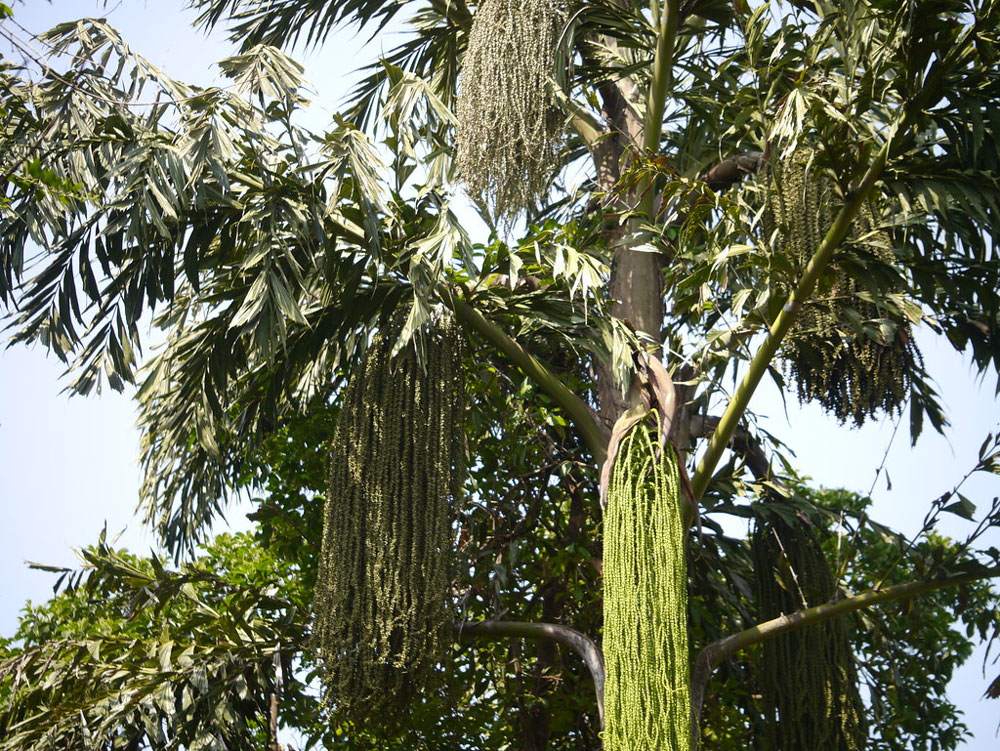Mari - Fish Tail Palm

Caryota urens
Summary
Scientific Classification
Kingdom: Plantae
Division: Magnoliophyta
Class: Liliopsida
Order: Arecales
Family: Arecaceae
Genus: Caryota
Species: C.urens
Scientific Name: Caryota urens L.
Common Names:
English: Elephant’s palm, Toddypalm, Fish-tail palm, Indian sagopalm, Jaggerypalm, Toddy palm, Sago/ Fish tail palm.
Hindi: Mari.
Marathi: Sur-maad, Bherli-maad.
Description:
- Habit and Habitat: Palms up to 15 m tall. Evergreen forests, also in the plains.Tall unbranched palm with peristant scars of leaf bases.
- Distribution: naturally found from sea level to 300 m, in Myanmar (Burma),India, and Sri Lanka where it grows on plateau or in rain forest clearings.
- Morphology:
Leaf: compound, bipinnate, to 5 m long; pinnae 5-7 pairs, to 1.5 m long, leaflets lamina 25 x 10 cm, cuneiform, apex premorse.
Inflorescence: spadices, shortly peduncled, much branched; spathes 3-5; spikelets closely arranged on the rachillae.
Flower: unisexual, Monoecious.
Fruit: Berry, stalked, ovoid or globose.
Seed: 1-2 seeded, ruminate.
Floweringandfruiting: January-April. - Propagation: through Seeds.
- Importance:
From the pith a good variety of “sago” is obtained which is highly nutritious. The fibres are manufactured into ropes, brushes, brooms, baskets. Toddy is also obtained from this palm. Terminal bud is edible. The sap extracted from the inflorescence of the plant is used to make sugar and alcoholic beverages. The root is used for treating tooth ailments. The bark and seed are used to treat boils.It is used to make a wide range of products, but especially brooms, brushes, ropes, baskets etc. - Location: Botanical garden, Main entrance garden, front yard of chemistry staffroom, Sports ground.
 Trees of GSS Project supported by Makerspace Belgaum Website concept and designe by
Trees of GSS Project supported by Makerspace Belgaum Website concept and designe by